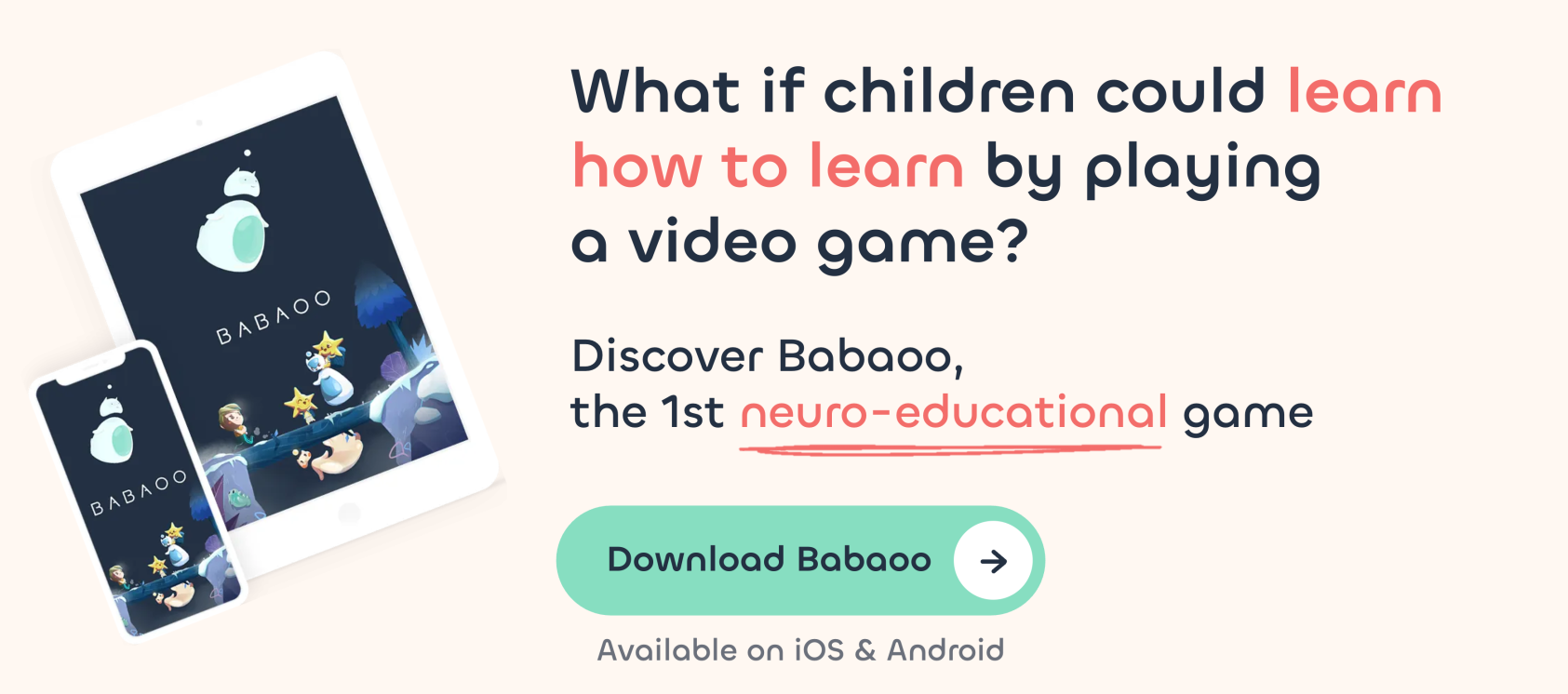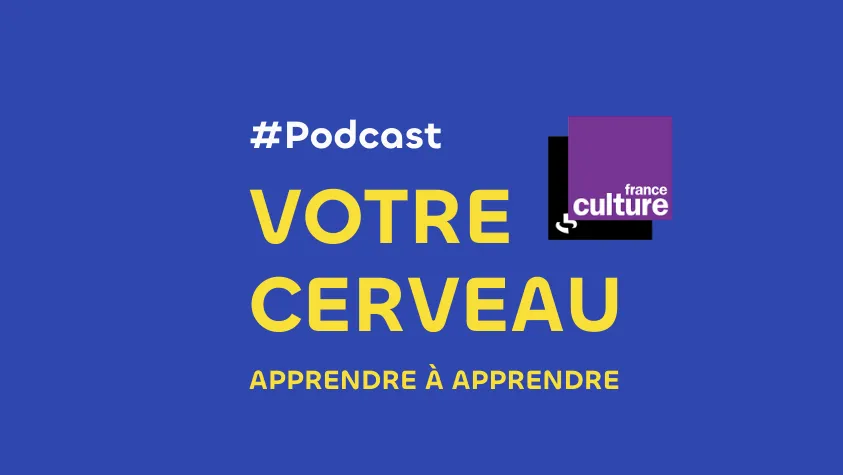
The different types of mistakes

Making mistakes… to learn!
Mistakes are a powerful learning tool: in children, they are a natural way of testing their limits, understanding their environment and developing skills. Acknowledging and accepting mistakes enables children to develop their critical thinking and ability to adapt :
- Personal discovery: the child learns by trial and error, discovers what works and what doesn’t.
- Development of resilience: in the face of failure, the child learns to persevere.
- Stimulating creativity: mistakes encourage innovative approaches.
✏ Note: children imitate adult behavior. As a parent or teacher, showing that you accept and learn from your own mistakes can only benefit them.
Babaoo’Tips 💡
- Adopt a positive attitude towards mistakes: show your children that making mistakes is natural and emphasize effort rather than perfection.
- Encourage self-evaluation. Ask children to reflect on their mistakes and identify what they could do differently next time.
- Value the learning process by focusing on the journey and effort involved, not just the end result.
Why focus on the different types of mistakes our children make?
A key approach for teachers
In the world of education, the perception of error has undergone a veritable revolution. Once seen as a sign of failure, it is now recognized as an essential learning lever. Modern teachers, armed with this vision, delve into error analysis to decipher their students’ thought processes. This benevolent, empathetic approach doesn’t just gauge knowledge; it reveals students’ real skills and celebrates every step forward.
For the teacher, understanding the typology of errors transforms the vision of assessment. This typology becomes a revealing prism: what are we trying to measure through assessment? Is it the student’s ability to reproduce knowledge, such as the recitation of multiplication tables? Or is it their ability to solve problems using appropriate methods, despite any errors in calculation? Or is it the ability to apply knowledge in other areas, such as using tables in science? These are just some of the questions that guide teachers towards a more nuanced and enriching assessment.
This new way of looking at errors paves the way for tailor-made teaching, adapted to the unique needs of each child. In this innovative learning environment, errors are no longer mistakes to be punished, but opportunities for exploration and growth. Valuing successes as much as areas for progress strengthens students’ confidence in their own abilities and nurtures their desire to actively learn.
Parents: a deeper understanding
For parents, exploring their child’s mistakes at school is a process rich in meaning. It goes beyond simply tracking academic results, opening a window onto how the child approaches and solves problems.
The aim is to decipher what lies behind each result: how did the child approach and solve a problem? What strategy did he use? What result did they obtain? What knowledge, such as mastery of multiplication tables, did he or she call on to achieve it? It’s a journey to the heart of the child’s learning universe, a chance to understand his or her learning and thinking processes, and to help him or her progress.
Babaoo’Tip 💡
Exchange with your child, asking him, for example, to explain his process behind a particular result. This will give you an insight into his thought process and strengthen parent-child communication around learning.
The Jean-Pierre Astolfi approach
Jean-Pierre Astolfi is a French academic. A specialist in the didactics of science, he has highlighted the importance of understanding errors in education. His key work, “L’erreur, un outil pour enseigner”, presents a pragmatic and constructive vision of error, seeing it as a learning opportunity rather than a failure.
The different types of error according to Astolfi
Astolfi offers a detailed classification of errors, each accompanied by concrete examples. He also offers avenues of remediation to help adults better support children.
Errors resulting from understanding instructions
Examples that fall under this error:
- The lexicon of the instruction is not mastered by the student: the words used are not understood.
- The wording of the instruction is ambiguous, or contains too much implicit.
Remediation suggestions for the adult:
✓ Have the student rephrase in his or her own words to check that he or she has understood the meaning conveyed by the instruction.
✓ Simplify the vocabulary used. Unless you’re testing vocabulary mastery, the purpose of an instruction is to give an instruction. It must therefore be comprehensible and contain no obstacle to what we really want to assess.
Errors resulting from poor decoding of expectations
Examples that fall under this error:
- The student is influenced in his answer, by what he thinks is expected of him.
- The student thinks that all the data in a problem must be used, whereas there is useless data, provided as “traps” (example: “On a boat, there are 26 sheep and 10 goats. How old is the captain of this boat?”. It’s likely that students will try to manipulate 26 and 10 to determine the captain’s age).
- The student doesn’t answer because he’s afraid of getting it wrong.
Remediation suggestions for the adult:
✓ Regularly propose statements with unnecessary data to train their critical thinking.
✓ Make students explicit what they are going to need and what is unnecessary in the statement.
Errors resulting from students’ misrepresentations
Example that falls under this error:
- A task requires the use of an intellectual operation that is not identified, recognized, or not yet mastered by the student.
- The student relies on erroneous knowledge, for example, relying on the conception that 4×5 = 25).
Points of remediation for the adult:
✓ Be sure to provide for progressiveness in learning: students generally know how to talk about a subject they’re passionate about, but making a structured presentation that meets formal constraints, on this subject, is not the same thing and requires learning and practice.
✓ Segment the skills involved in assessing a production. For the assessment of a poem, for example, we distinguish between the assessment of the recitation of a text from memory, and the expressiveness with which the poetry was recited, which are 2 totally different aspects, and therefore should not be the subject of a single “mark”.
Errors related to the nature of the intellectual operations involved
Examples that fall under this error:
- The student does not (or not yet) have access to the knowledge needed to solve a problem (example: he is asked to calculate the result of 35-48 when he has always been told that a result cannot be less than zero).
Remediation path for the adult:
✓ Use a diagnostic assessment at the start of the teaching sequence. This is a rapid assessment that gathers students’ initial knowledge and representations, with a view to developing them.
Errors due to cognitive overload
Examples that fall under this error:
- The problem is based on keeping too much information in memory for the student.
- The problem requires resolution in a large number of steps.
Track for adult remediation:
✓ Ensure that the proposed task does not require too much data management, for example, by breaking down the instruction into several subtasks.
✓ Teach students to set out, in note or diagram form, the various data involved in a problem and the approach they plan to use to solve it.
✓ Assess the various skills involved in a production, in several stages. In writing production, for example, text production and spelling management can be assessed at two different times.
Errors resulting from the approaches employed by the student
Example that falls under this error:
- The student’s production does not conform to expectations because the strategy implemented is not what the teacher expected. An error in approach can still lead to the right result.
A remediation approach for the adult:
✓ In a problem-solving approach, invite students to represent the situation before embarking on the resolution such as drawing a picture of the problem-situation: what I need to find / what I know / what I’m missing.
✓ Make a diagram of the approach they will use to solve the problem to enable the teacher to assess the relevance of the choice and execution of the approach.
Errors linked to a transfer of skills that has not yet been made
Example that falls under this error:
- The student knows how to make a subtraction, but has not yet transferred this skill to all areas (example: making a subtraction to calculate the duration of a period in History, from 2 dates).
Track for adult remediation:
✓ Suggest rituals that invite students to draw on knowledge and skills built up in other subjects: “How do you think we could find out how long Louis XIV lived?”
Errors resulting from the inherent complexity of the content
Examples that fall under this error:
- Bordering the millions with a child who has not acquired the construction of the thousand.
- Bordering fractions with an abstract approach without having gone through concrete manipulation (“1/7 is a slice of a cake cut into 7”).
- Abording, too early, too many past tenses in conjugation (passé simple, imparfait, passé composé)
Track for adult remediation:
✓ Make sure to stay within the child’s Zone of Proximal Development: not too difficult, not too simple! An optimal error rate would be around 15%.
✓ Use a diagnostic assessment at the start of a teaching sequence to understand where everyone is starting from.

The Babaoo recap
Mistakes are natural and help children test their limits, understand their environment, and develop skills. Mistakes, once often perceived as failure, are now seen as a lever for learning.
According to Astolfi, there are 8 types of error: related to understanding instructions, decoding expectations, misrepresentations, the nature of intellectual operations, cognitive overload, the approaches used, the transfer of skills not carried out, and the inherent complexity of the content.
Encourage self-evaluation, effort and reflection in your child, and set an example by accepting your own mistakes. It’s by understanding mistakes that we foster fulfilling learning. 🌈
You may also be interested in these articles


